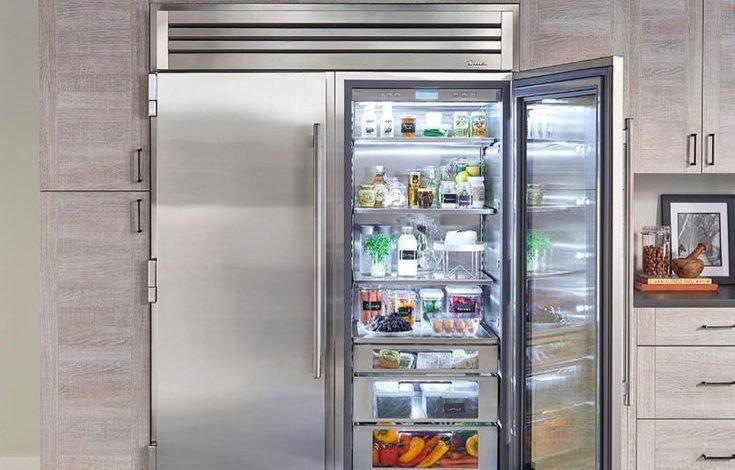How Can Your Fridge Make You Sick

It is a popular misconception that bacteria prefer warm environments to grow, although some varieties can tolerate cold temperatures. Microorganisms can breed in your refrigerator and thrive there. Psychrophilic bacteria (psychrophilic) are capable of growing in a cold environment, similar to the temperature of a refrigerator. These germs can contaminate food and poison people. They are unhealthy for people. It is appropriate that the refrigerator be kept clean and germ-free in light of this negative effect.
What happens when you eat contaminated food?
Foods like milk, eggs, raw meat, chicken, and fish that are improperly packaged or stored might introduce psychrophilic bacteria into the refrigerator. If your refrigerator is not clean, it becomes a thriving place for germs with a suitable environment and it affects other refrigerated items too. contaminates the foods that are stored. You consume the germs when you eat food that has been tainted with them. The bacteria become pathogenic once they enter your body.
Even if the germs didn’t enter your system, they can still cause catastrophic illness by releasing toxic chemicals into food. Listeria, Pseudomonads, Salmonella, Coliforms (E. coli), and Vibrio are a few examples of these bacteria. Meningitis, diarrhea, irritable bowel syndrome, sepsis, dysentery, gastroenteritis, and food poisoning are just a few of the diseases that Psychrophilic can cause. In immunocompromised patients, elderly persons, and newborns, it can cause mortality.
How to maintain your fridge
While it may be easy to blame our sicknesses on the refrigerator, let’s be clear that this is not the issue. The underlying issue is that we don’t know how to operate and maintain our refrigerators effectively, and we also don’t store food correctly. Following are several fridge blunders to avoid that can prevent you from contracting a foodborne illness if you find yourself cooking a lot at home and using your fridge more and more.
1. Food Storage
You should store food wisely. There are multiple temperature “zones” inside your refrigerator. As an illustration, high-risk goods including milk, seafood, raw meat, eggs, cooked rice, and pasta should never be kept in the refrigerator door. Since it is typically the hottest, the most bacterial growth can occur there. High-risk foods should be kept on the refrigerator’s shelves, where the temperature is more consistent.
You can stop dangerous bacteria from spreading through the other parts of the fridge and contaminating ready-to-eat food Always cover the uncooked meats and keep them on the bottom part. Defrosting raw meat complies with this requirement as well. Food should always be kept in sturdy, airtight containers.
2. Immediate spill cleanup
According to Marham spills do occur, but how frequently are they cleaned up in your refrigerator? Take this as a warning if you’re putting off cleaning up that sticky mess at the back of your refrigerator: such spills could contaminate your food and lead to serious disease. Experts advise that you should wipe up spills right away and clean out your refrigerator with a moderate bleach and water solution at least once every two weeks. Contact expert doctors anytime by connecting with Marham.pk
3. Dates of Food Expiration
The “first in, first out” principle should be used to rotate the stock in your refrigerator and freezer regularly. It’s imperative to go through your refrigerator’s contents and discard any expired food. Food that has gone bad might contaminate other foods in the refrigerator and be dangerous to consume. Audits of freezer supplies are also essential.
Meat and other products can be easily bought in bulk and frozen for later use. However, it can be challenging to determine when they were purchased without suitable labels. Foods should be labeled with the date of purchase if their package does not include an expiration date. Food should always be thrown out if the date of purchase is a mystery. Keep in mind that it’s always better to be safe than sorry.
4. Food Organization
The goods can truly stay fresh for a very long time if they are stored in the right compartments. It is a good idea to arrange your food storage so that the most perishable items are kept in the coolest region. To prevent food spillage, keep milk products, veggies, and poultry in separate locations. Make sure the goods are stored in the appropriate containers to prevent spills and cross-contamination.
5. Keeping Your Fridge Stable During a Power Outage
Power outages can be annoying and cause food to deteriorate. However, you can manage the dangers with careful planning. Shut the door, please! This is the most crucial step you can do to ensure that your food is safe for a longer period, and it’s also the simplest.
Move all the sensitive things to the middle shelves of the fridge, which are the coolest portion of the refrigerator, as soon as your power goes out. Since the top shelf and the doors are typically the first places to heat up during a power outage, be sure to remove everything from there.
High-risk meals can be kept cooler for longer by being kept in a Styrofoam container in the refrigerator if you can. Before using anything once the electricity is restored, you must go through the food. Due to the fact that various food kinds provide distinct dangers, each item should be assessed separately.
Conclusion
Eating leftover meals in excess can be bad for your health. You can store the leftover food in the refrigerator for three to four days. But make sure you consume them before then. The food may lose its nutritional content if it is held for a prolonged period before being consumed. Additionally, it could result in issues like food poisoning or indigestion. To learn how to eat healthy for your overall health, speak with your top stomach doctor.
FAQs
1. Can you get sick from a refrigerator?
The contents of your fridge, however, can contaminate your food and sicken you. Did you know that dangerous bacteria like salmonella, listeria, and E. coli may thrive in dirty refrigerators?
2. Can I get sick from the mold in my fridge?
A fungus called mold thrives in wet places like refrigerators. Throw away all the food stored in your refrigerator as you notice mold developing there. Overall Health problems from the mold could include headaches, nausea, vomiting, diarrhea, and skin rashes.
4. What are the symptoms of mold toxicity?
- Cognitive challenges (brain fog, poor memory, anxiety
- Abdominal or muscular pain
- Excessive weight gain or decrease.
- Tingling and numbness in the body’s extremities or other parts.
- Metallic taste in the mouth.




